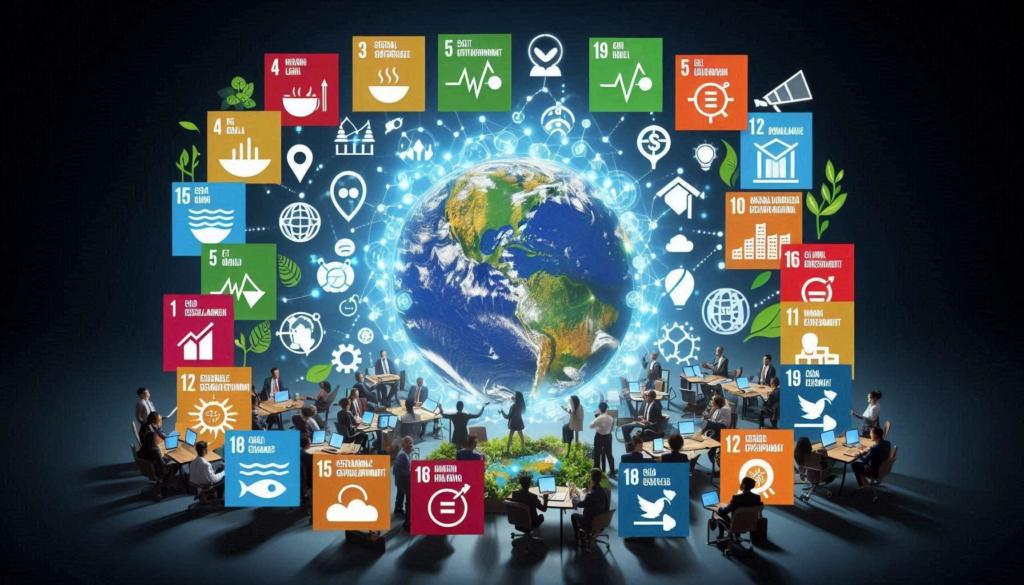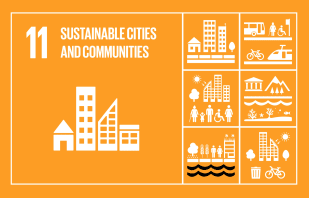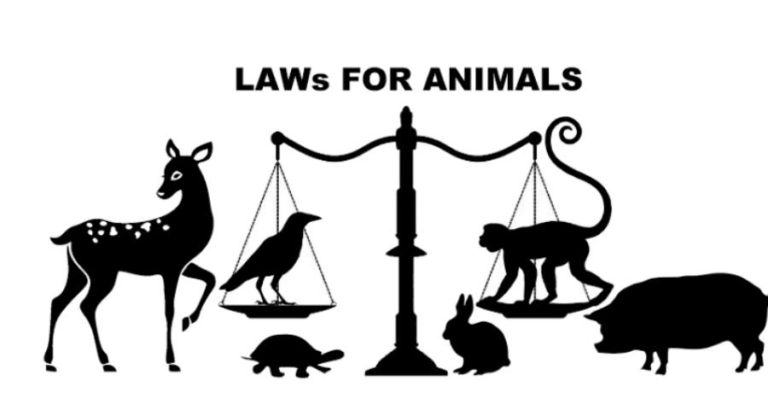
ABSTRACT
Human activities have caused environmental destruction, including the degradation of natural resources. The well-being not only of current generations, but also of future generations, is necessary to create a balance between economic development, environmental protection and social development. This goal can be achieved through the Sustainable Development Goals. These objectives are a tool to achieve the sustainable development process, and, in this article, we will study the Sustainable Development Goal 11 which focuses on sustainable cities and communities.
Cities are the catalyst for sustainable growth. In my opinion, it provides a thriving environment for ideas, science, culture, economics and manufacturing. People can try economically and socially in the cities, but only in places that can engage people in the product of employment and the resources of the land are not overwhelmed by the expansion. Rapid development and urban sprawl characterized by overcrowding, lack of essential services, lack of adequate housing and inadequate infrastructure have the potential to undermine national development plans and global sustainable development goals. In this article, perhaps we discuss Sustainable Development Goal 11, which aims to build a strong foundation for sustainable cities and communities by 2030.
OBJECTIVES
● Understand the basic principles of Sustainable Development Goal 11
● Assimilate the link between goal 11 of sustainable development and other sustainable development goals.
● Understand the relevant objectives and indicators.
● Help readers and their particular communities develop sustainable development by communicating the Sustainable Development Goals to a wider audience.
MAPPING OF SDGs WITH OTHER GLOBAL FRAMEWORKS FOR
SUSTAINABLE DEVELOPMENT
The Sustainable Development Goals call for global action to end poverty, preserve the environment and ensure that everyone lives in peace and prosperity. While there are many other global frameworks that focus on the protection of natural resources and the well-being of the systems that depend on them, including human settlements, to achieve sustainable development in the true sense, these global agendas must take into account a synergistic implementation that could more effectively achieve the desired end results.
To name a few, the 2030 agenda linked to other global agendas such as the Paris Agreement on climate change, the achievement of objectives that produce important urban aspects in the implementation of the Sustainable Development Goal 11, all have a significant overlap and a clear understanding. of objectives in terms of improving resilience, supporting sustainable development and minimizing climate change and disasters.
Therefore, it is important to promote a consistent approach between the three global agents, planning, execution and reporting. Coordination will allow better use of resources, improve planning quality and enhance impacts. It will also help reduce future conflicts and ineffective policy implementation, allowing for more effective and productive achievement of common agenda goals.
DIMENSIONS OF DEVELOPMENT IN CONTEXT OF SDGs: 11
The term “sustainable development” is widely used in the literature on cities and urbanization around the world. However, there is still a lack of a unified definition that can be adopted to understand what the true meaning focuses on. Sustainable cities are often associated with ecology and greenness, but their goal remains to achieve the harmonious growth of various other dimensions such as the environment, the social and the economy that shape the conditions of the city and their community.
● Environmental: Reduce environmental impact and resource use to sustainable levels and improve environmental quality and safety.
● Economic: Improve long-term sustainability, competitiveness, employment and equitable distribution of resources.
● Social: Ensuring an equal distribution of economic resources and improving health, education, security, diversity and quality of life.

TARGETS AND INDICATORS
Each objective of sustainable development is divided into specific and detailed objectives with several indicators that show whether these objectives have been achieved. Objectives and indicators are mainly used to measure the successful implementation of the program. It is therefore important to understand how each indicator contributes to its respective goal and to the relevant objective of sustainable development to a large extent.
Indicators are actually the backbone of the monetary system of Sustainable Development. They are meant to be used in two ways:
- First, as management tools to help the government and supporting organizations to monitor the implementation of strategies.
- Second, as a great map to track the progress and success of the respective goal and objective.
- SAFE AND AFFORDABLE HOUSING: Making settlements inclusive requires, above all, safe and affordable housing for all. Therefore, the first goal of Sustainable Development Goals 11 aims to provide safe and affordable housing and basic services for all. This goal also includes the upgrading of existing slums to ensure overall safety and a healthy environment for human well-being.
- URBAN POPULATION LIVING ON SITE: The Singh indicator of safe and affordable housing needs requires an estimate of the proportion of the urban population living in slums, informal settlements or inadequate housing. An old Aslame house is defined as a group of individuals living under the same roof who lack access to water and sanitation, leaving space under a durable shelter.
- ACCESSIBLE AND SUSTAINABLE TRANSPORTATION SYSTEMS: It is understood that safe and sustainable cities must prioritize access to safe, sustainable, affordable and accessible transportation for all. Improving road safety and expanding public transport, as well as encouraging inclusion, paying particular attention to the needs of people in vulnerable situations, such as women, children, the disabled and the elderly, are an important part of the transportation system.
- ACCESS TO PUBLIC TRANSPORT: The accessibility of the transport system can be measured as the percentage of the population that has adequate access to public transport by gender, age and people with disabilities.
- INCLUSIVE AND SUSTAINABLE URBANIZATION: Inclusion can be extended to the urban level to improve inclusive and sustainable urbanization and the ability to participate in integrated and sustainable planning and management of human settlements. Planning is the main aspect of this particular objective in which the relevant government bodies play a very important role. Public participation and partnerships can be well encouraged for the effective representation of urban decisions.
- SCALE OF SUSTAINABLE URBANIZATION: Organizational norms determine land access to the urban area. The ratio of the rate of land consumption to the rate of population growth can be calculated to determine the successful implementation of the goal.
- THE PROTECTION OF THE WORLD’S CULTURAL AND NATURAL HERITAGE: Natural cultural heritage is the symbol that represents particular regions. The diversity and distinctive characteristics preserved by climate and history are a very important part of the settlements located in different regions. Therefore, the protection and preservation of the identity of the region requires efforts to protect and strengthen the efforts and preservation of the natural cultural heritage up to the local level.
- REDUCE THE EFFECT OF NATURAL DISASTERS: Natural disasters tend to cause significant loss of life and property to disrupt the functioning of cities. Therefore, focusing on reducing the negative effects of disasters on cities is an important step towards sustainability. this target focuses on reducing the number of death people affected and the direct economic loss relative to the Global gross domestic product caused by disasters including water related disasters with the focus on protecting the poor people in vulnerable situations not only this at focuses on economic losses from natural disaster the direct economic loss in relation to GDP damage to critical infrastructure and the number of distractions to basic services are attributed to disasters.
- REDUCE THE ENVIRONMENTAL IMPACTS OF CITIES: Environmental conditions of a place is what makes its liveable therefore reducing the environmental impact due to cities is a crucial and important factor they started focuses on reducing adverse per capita environmental impact of cities by paying special attention to air quality and waste management. solid waste management this indicator measures the proportion of municipal and solid waste collective and managed in controlled facilities out of total municipal wastage generated by cities urban air pollution focuses on measuring the population weighted exposure to MB and pollution that is concentrations of suspended particles majoring less than 2.5 microns and diameter the main goal of this indicator is to reduce the adverse per capita environmental impact of cities by checking the level of air pollution.
- PROVIDE ACCESS TO SAFE AND INCLUSIVE GREEN PUBLIC SPACES: Being safe is a part of Sustainable environment therefore providing universal asses to safe and clean and green public spaces particularly for women and children and old age person and person with the disabilities is an important target of this sustainable development goal 11 at focus is on open space in cities this indicator AIMS at assessing the provision of universal SS to safe inclusive and assessable green and public faces and other is safe faces and cities this indicator checking the degree of safety of particular spaces in the city this can be achieved through calculating the proportion of victims of physical and sexual harassment by sex disability status and place of occurrence in the previous one year.

INTERLINKAGES WITH OTHER SUSTAINABLE DEVELOPMENT GOALS
Goal 11 has extensive links with other sustainable development goals and agendas such as the New Urban Agenda and the Sendia Framework. Most of the indicators of the Sustainable Development Goals are related to urban policy and have a direct impact on cities and human settlements. Nearby indicators are also monitored at the local level. The assessment of slums and inadequate housing are all linked to poverty and gender equality. Then take advantage of the evaluations of public spaces, basic infrastructure and participation in local governance and decision-making.
Urban waste management is closely related to drinking water, sanitation and hygiene. Energy systems are essential for the development of safe and sustainable human settlements and a productive city. Likewise, good infrastructure and industrialization are essential for the prosperity of inner cities, the security and equity of cities. We can understand that most of the Sustainable Development Goals are interconnected in some way and their implementation at the local, national and international level must be coordinated to achieve the 11 Sustainable Development Goals directly related to the targets and indicators of other sustainable development goals.
CONCLUSION:
We can conclude that Sustainable development is imperative to meet the needs of the current generation without compromising the ability of future generations to meet their own needs. It requires the integration of economic, social and environmental considerations in all decision-making processes. The practice of sustainability begins with individuals adopting environmentally friendly habits, such as conserving resources, reducing waste, and using public transportation. Greater systemic change is needed by governments, businesses and institutions to transform our economies, technologies and social systems towards sustainability.
This includes revolutionizing the way we produce and consume, to conserve nature, to invest in renewable energies and to give more autonomy to communities. Education also plays a vital role in raising awareness. Cities are the engines of growth, but the degree of urbanization of the units presents a number of challenges to achieve Sustainable Development Goal 11. Sustainable Development Goal 11 refers to sustainable cities in harmony with the three dimensions of the environment, society and the economy.
Among the 17 Sustainable Development Goals 11, the review focuses on inclusive cities, safe cities and sustainable cities. There are 10 objectives and 15 indicators that include aspects related to safe, affordable and inclusive housing in the organization of transport, green spaces and other dimensions related to environmental impact. Heritage conservation and disaster reduction policies and governance to measure the achievement of the Sustainable Development Goals 11. We all need to recognize that the urban component of the various Sustainable Development Goals is essential to reach its full potential in the promotion of peaceful and inclusive communities.
That is why we all need to understand that building an inclusive city, a green city, is not a one-day job. We all must unite and start protecting the environment from our countries and promise to plant at least 1 tree per year to promote ecological environmental sustainability that will lead to a green and clean city and by doing so we can all achieve the Enduring. Development Goal 11 by 2030. So, we all need to start considering the sustainability of the city as a major concern to achieve the Sustainable Development Goal.




